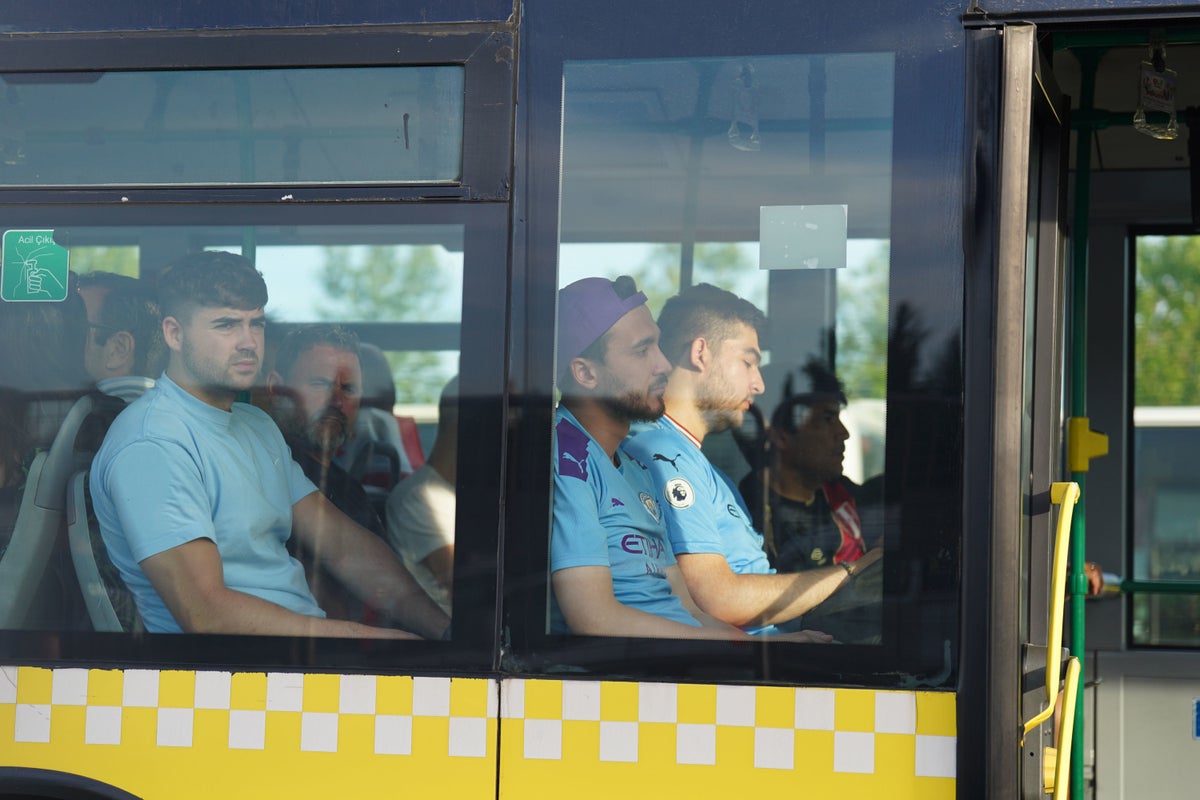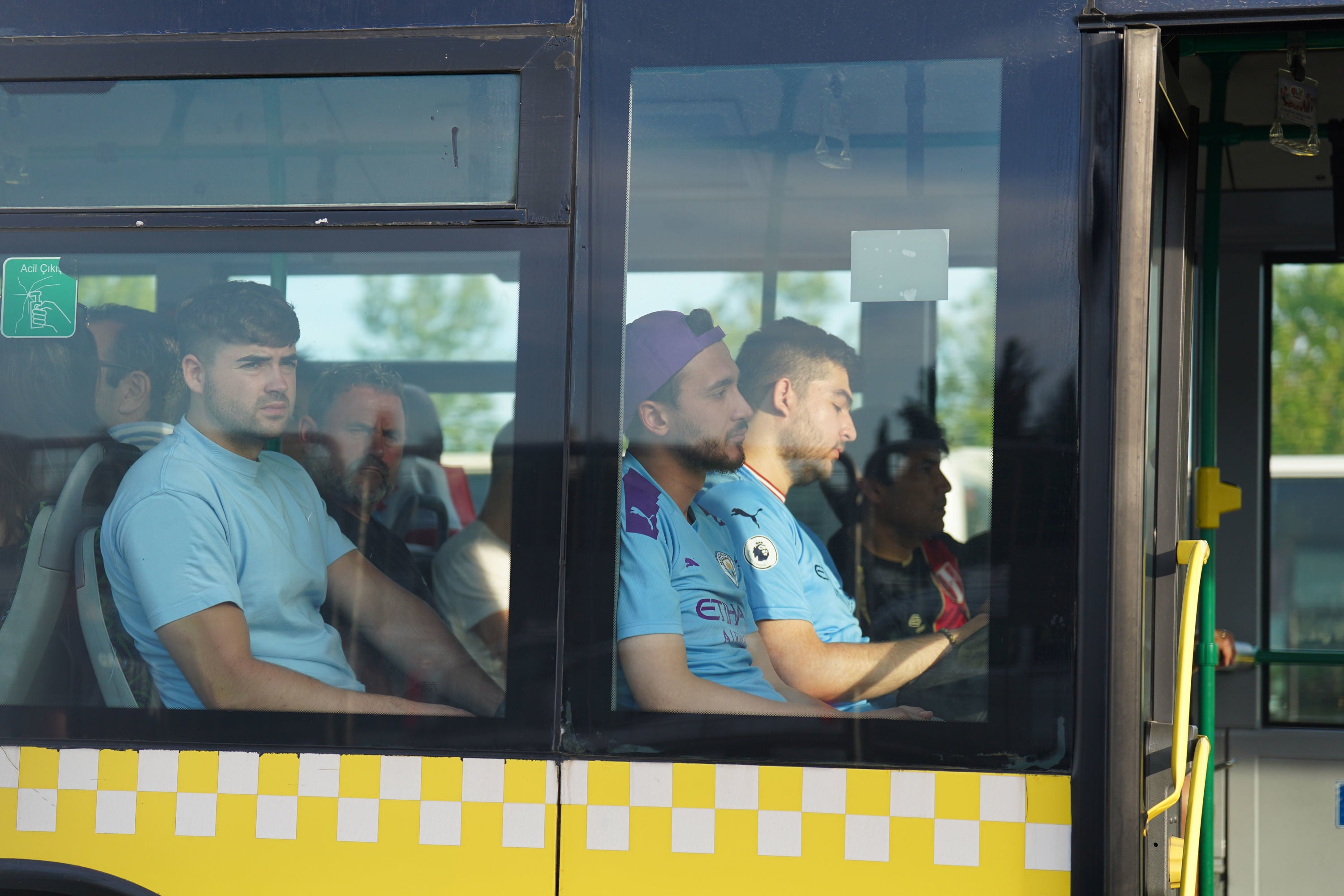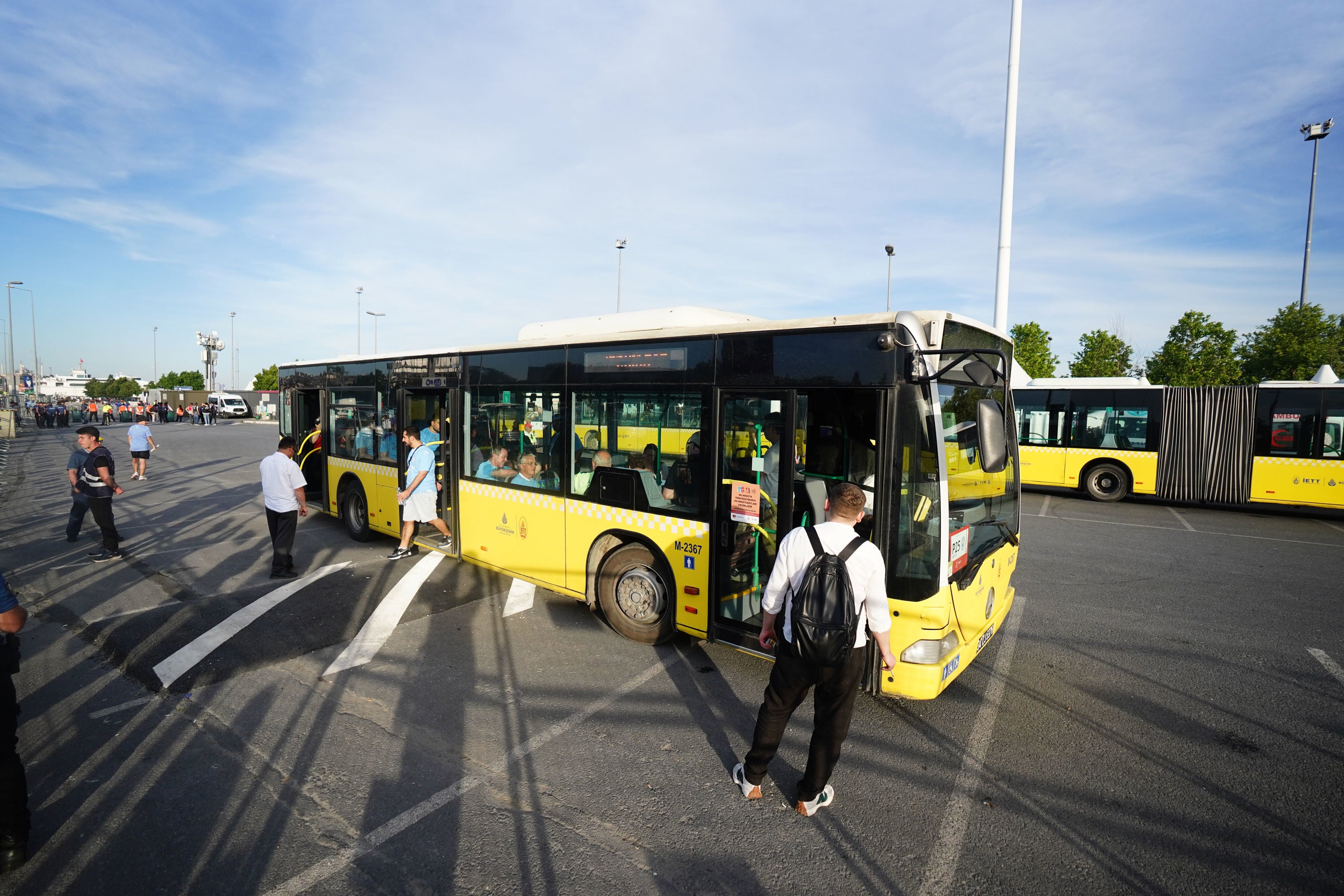
Uefa are facing more pressure about their ability to stage major events, as another Champions League final descended into “dangerous” chaos, and supporters complained that the situation again put their safety at risk.
Among a series of serious issues faced at Istanbul’s highly criticised Ataturk Stadium for Manchester City’s victory over Internazionale were:
- Supporters forced to travel on shuttles for up to three hours without water or toilets
- A total lack of guidance and minimal travel options post-game, which left elderly fans and those in wheelchairs to traverse a mile of slip road in order to hail down gridlocked taxis, which charged up to €200 (£171)
- Only two concession stands for an entire end of fans, creating waits for simple cartons of water for up to two hours
- Fewer than 20 toilets serving 20,000 people in the fan zones
- Fans having to abandon transport and climb over scrubland and “building site” surroundings to make kick-off
The organisation of the event has been described by attending fans as a “dangerous mess”, with supporters incredulous at how a major event in 2023 could be held in such a poorly-equipped stadium more than 12.4 miles (20km) from the city centre.
One of the problems that immediately became visible was that the Ataturk really only has two access routes from a notoriously congested city infrastructure, a narrow road system and a recently built metro. Both inevitably became completely gridlocked as early as six hours before the 10pm kick-off with the problem getting worse three hours after the game ended. Some stories involve supporters vomiting on the two-hour-plus shuttle trips due to the lack of water, and people bursting into tears due to the stress from waiting so long to go to the toilet.
Questions have been raised within the game about how and why the Ataturk Stadium was selected, especially as president Recep Erdogan has been so keen to host major football events for so long. As one prominent football figure confided to TheIndependent: “No way should this stadium be hosting a Champions League final.”
The problem was all the worse given that Istanbul’s staging of the final was already postponed twice in 2020 and 2021 due to Covid, which should have allowed ample preparation time. The Istanbul final follows the near-disaster that was the 2022 final at Paris’s Stade de France involving Liverpool and Real Madrid, which prompted a wide-ranging and excoriating review from Uefa.
The European governing body has been contacted for comment but sources within the organisation insist that the review made a series of recommendations they are continuing to act on. It was in the aftermath of Paris that Uefa signed a memorandum of understanding with Football Supporters Europe, and the representative group was an active party in site visits to the Ataturk prior to the final. While sources insist the venue “seemed OK” on those visits, fans have been amazed that it was deemed a suitable venue given how obvious the travel issues alone were. The Independent has subsequently learned that some of the issues were flagged beforehand, with questions raised as to the quality of the assessment when the Ataturk Stadium was picked back in May 2018. “It wasn’t suitable in 2005 and it isn’t suitable now,” one involved source said. “What is shows is there is no way to organise a major game there given its location, it’s impossible. The metro can’t handle this level of traffic and doing it through buses requires a lot more personnel.”
There is nevertheless an insistence that there was only so much that could be done given the contracts were signed, and that next year at Wembley is the bigger test for Uefa’s recommendations after Paris. It begs the question about the requirements.

A number of people came forward to The Independent to explain the worrying chronology of the day, such was the concern with what happened.
Nick Stapleton, a City season ticket holder and freelance journalist first introduced to the club as a child by his father, the longtime TV presenter John Stapleton who has been a fan since the 1950s. They could sense issues developing early in the day. One of the immediate complications was that Uefa had advised Inter supporters to travel by metro and City by shuttle.
“There was already a huge queue for the buses at 4pm and there were no facilities at all, which we were warned about,” Nick Stapleton said. “So we brought water and prepared for the fact there wasn’t a loo. But we were stood there in the heat for 45 minutes and when we eventually got on the buses, police and stewards took our water off us as we couldn’t bring anything from outside into the stadium.
“Our bus took two hours but others took three, with no water or toilets for all that time. One guy threw up on the bus because of the heat, with that then spilling around the surface. Others were so desperate for the toilet that they were peeing out windows and gaps, and we were told of another bus where someone had to demand the driver pull over.”
The long travel time for a journey that can usually take 40 minutes was because of complete gridlock around the stadium. Metros were also over-capacity at least five hours before kick-off. Ger Gilroy, an Irish broadcaster, was one of many who had to resort to desperate alternatives.
“We had to abandon our minibus and scale a steep briar-infested scrubland to make it in time for kick-off,” he said. “Before we got there we had to shimmy down a stone wall and jump over an open sewer!”
A number of those attending complained that the “horrible logistics” around the stadium even after arriving were just not fit for purpose, with too few signposts or even access routes. A common line, articulated by Mr Stapleton, was that it was “a building site”.
One elderly fan, who declined to be named, said he had to walk 6km around the stadium to get to their entry point. Inter fans, meanwhile, found that metro stations closest to the stadium were eventually closed due to congestion.
Mr Stapleton, whose father is 77 and recently had a hip operation, encountered similar difficulties. “The first thing we did when we arrived was go to the fan zone for the loos. Dad was already feeling the heat, and feeling frail and tired. But the loos were just a collection of caravans, maybe 10-15 toilets for 20,000 people.
“Female fans couldn’t just pee on the fence, so they were queuing for an hour. One woman told me she burst into tears at one point as she was so desperate. We then went into the stadium around 7.30pm, although a bottleneck already started to build up as there was a bag search, ticket check and pat-down search again. At that point it was fine, so I said to Dad he should go and sit down and I’d get water. We hadn’t had any since ours was taken off us three hours prior. We also hadn’t had food.
“We were in block 333, the far left side of the lower tier, where 10 to 15,000 of City’s 20,000 fans were. There were only two concession stands – two – with six people serving each, and only four card machines. This was an event sponsored by Mastercard and had four machines, and one of those broke down. That meant it took me one hour and 45 minutes to buy water. People were going mad. I felt for the guys running the stall, as they were completely overwhelmed. It then cost almost €50 for two pieces of cheap meat, two cartons of water and a bottle of Pepsi.

“The game itself was an incredible experience. My Dad was crying at the final whistle, and it was amazing to experience it with him. But that’s part of it as regards any incentive to change. Loyal football fans are always going to go through hell and high water for the once-in-a-lifetime experience of watching your club win the Champions League. After the players lifted the trophy, we made our way out of the ground about 1pm, expecting the same system as before the game.”
It was here when the worst problems actually began, though. One individual who was among the party for Inter players’ families, but declined to be named for reasons of discretion, explained the situation at their end.
He said: “Our exit from the stadium was dangerous. Everyone was filtering through one small exit, which wasn’t big enough for two people to pass through. Thousands were trying to get through this, and then onto crumbling steps into the car park. From there, families were walking down the sides of motorways trying to find cabs. It was dangerous.”
Mr Stapleton found the same experience from the other side.
“What emerged when we got to the waiting area was there was no help, only a few signs, and the two buses for our area were already full. Loads of City fans were confused, not knowing what was going on.
“There was also gridlock due to a huge queue of taxis coming and buses trying to get out. The road was only so wide, with two cars door to door if they tried to go through at the same time. Nobody seemed to be taking any control of this.
“So even people on the buses were stuck there until 3am. We were among thousands of City fans walking down the motorway and picking our way through traffic, a lot of them elderly or even in wheelchairs. This was another thing as the stadium was not really wheelchair-accessible.
“This was not safe, and my dad did not seem comfortable. He was exhausted, and when you have a hip replacement one of the big risks is a fall as you need to have it reconstructed. When we eventually found a taxi, one wanted €200 to take us back. A second said €100 and we took it as we were scared and in a bit of a panic.
“So many fans were in the same situation. Istanbul is a great city but I don’t understand why they chose to send us to that stadium, it’s insane. When it’s that much of a challenge to even have water.”
Uefa, Football Supporters Europe, Manchester City and Internazionale have been approached for comment.







